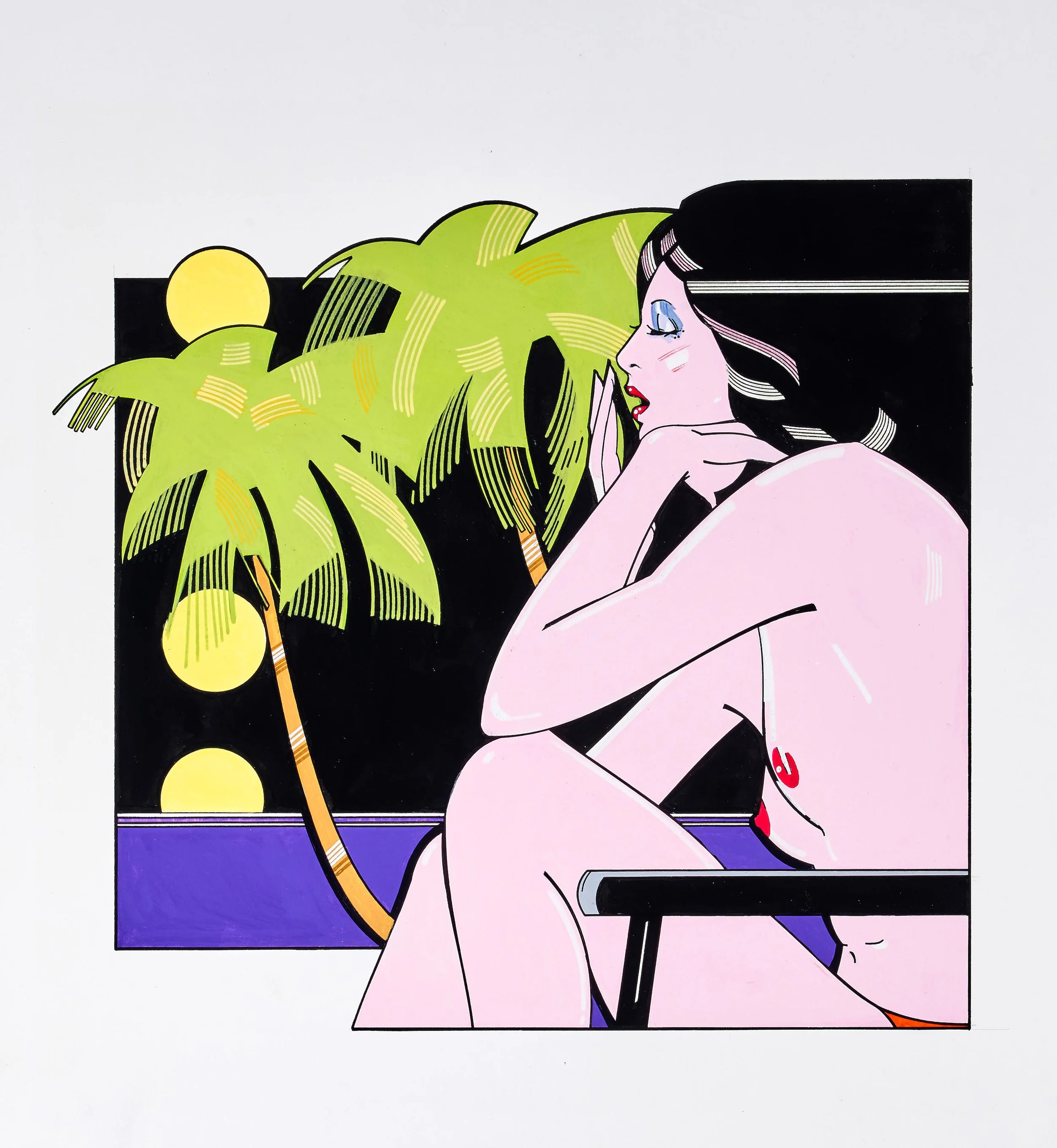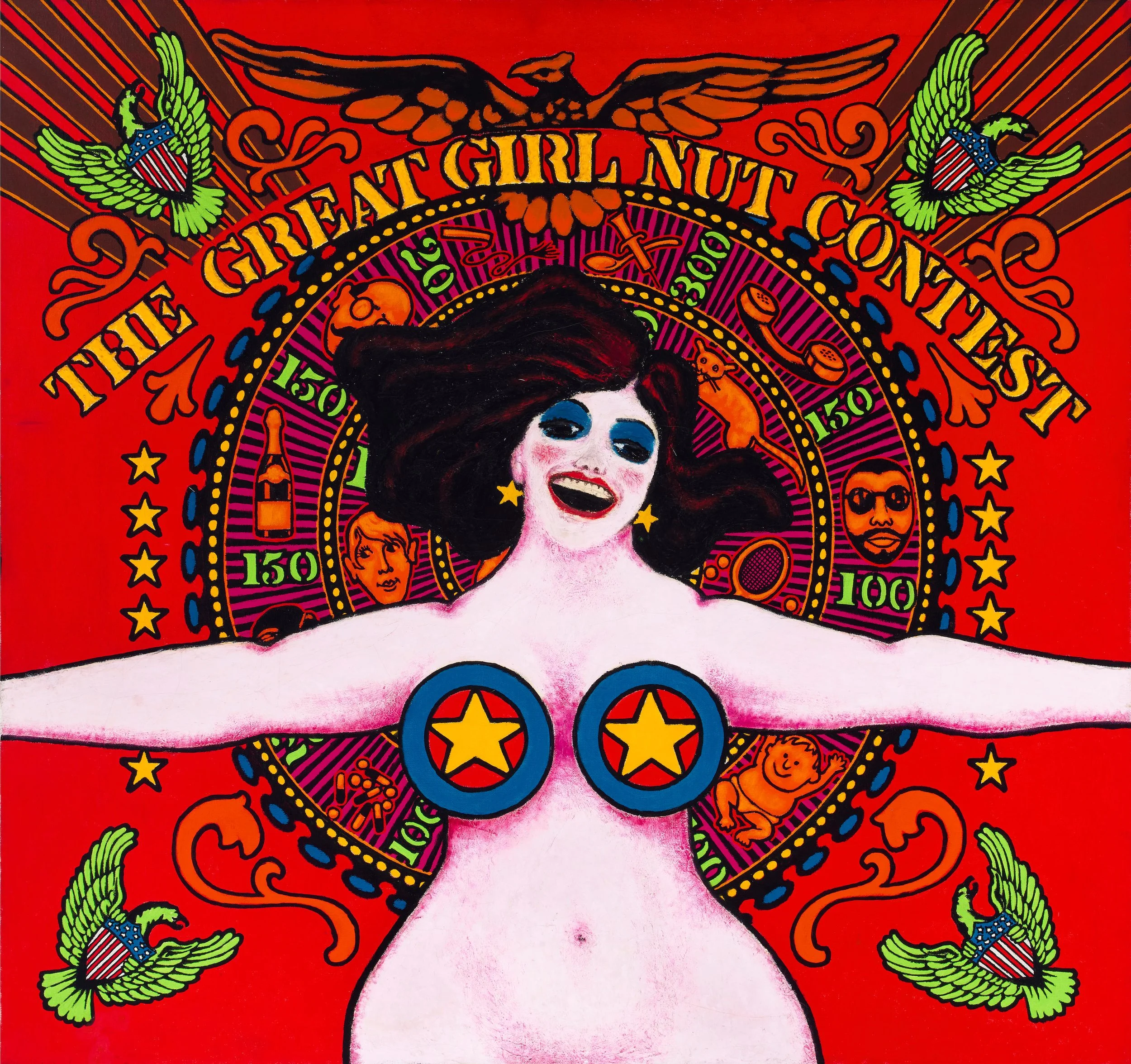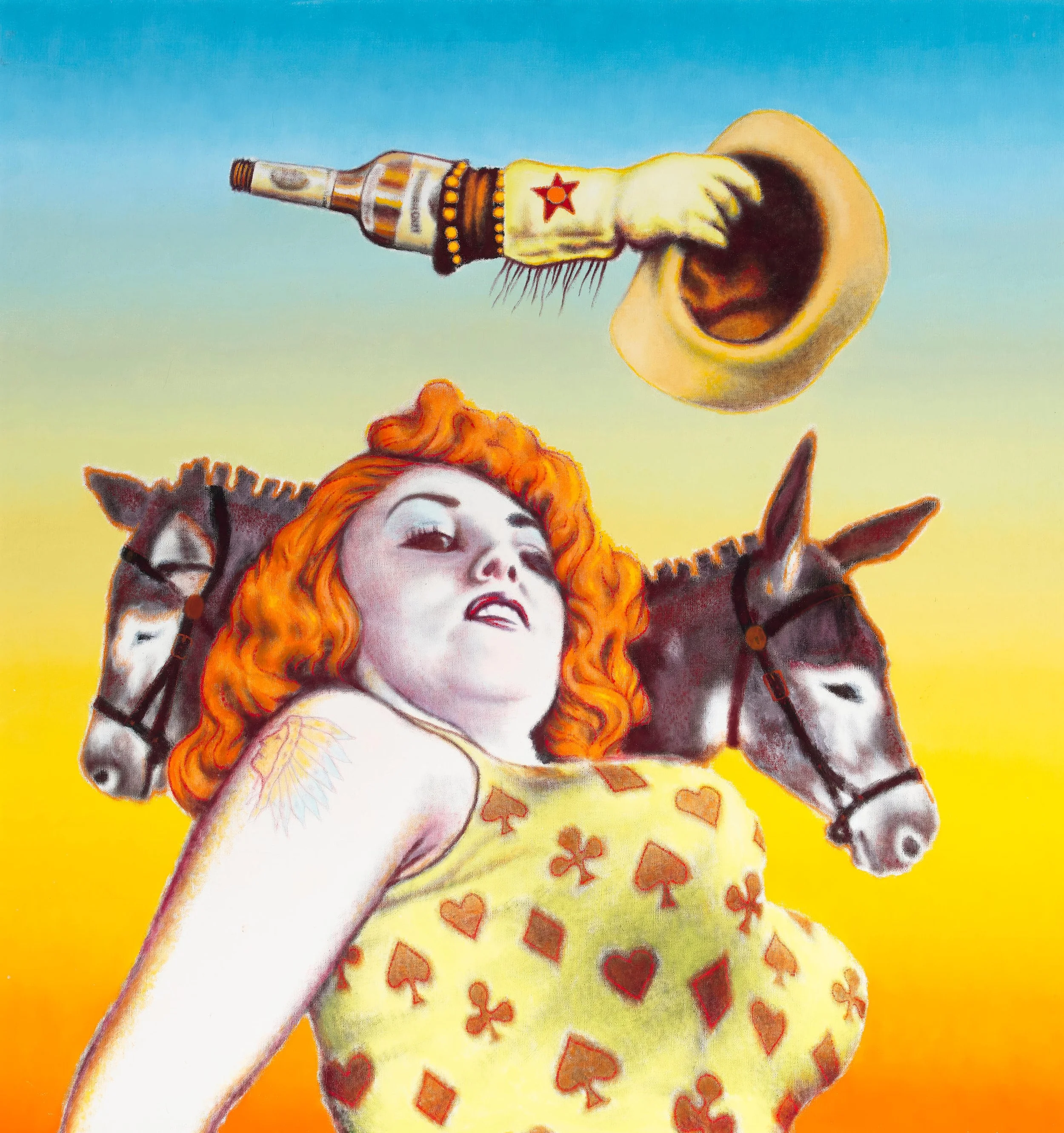
Playboy's Cultural Legacy: Unveiling Chicago Imagists' Artistic Tapestry
PATRICK NAGEL ‘Up Front After Hours #4’ 1975
All Images Courtesy of Bonhams
Celebrating the 70th Anniversary of the iconic lifestyle and entertainment magazine, Bonhams is set to unveil a captivating selection of artworks, from Art Paul's Vision to Chicago Imagists' Brilliance in the ‘Collection of Playboy’

ED PASCHKE (1939-2004) 'The Great Girl Nut Contest' 1968 signed on the reverse; signed, titled and inscribed on the stretcher bar oil on canvas 31 3/4 by 33 1/2 in.

ROGER BROWN (1941-1997) 'Xong of Xuxan' 1970 titled and dated 1970 on labels affixed to the reverse oil on canvas 34 1/4 by 25 1/4 in.
Playboy, a cultural tastemaker reflecting major world events and cultural shifts, not only defined the archetype of the international bon vivant but also became a platform for original, provocative content that attracted Pulitzer Prize-winning and internationally renowned writers. This dedicated auction is a celebration of storytelling, showcasing the artistic vision that has been an influential force since the magazine's inception in 1953.
At the heart of Playboy's artistic vision was Art Paul (1925 – 2018), the first art director of Playboy and the creative mind behind the instantly recognizable Bunny logo. Paul not only designed the magazine's visual identity but also played a crucial role in commissioning original paintings and illustrations, often identifying artists early in their careers who would later achieve commercial success. All the commissioned works in this sale, created during Paul's tenure as the art director until 1982, are a testament to his keen eye for talent.
Based in Chicago, Paul drew heavily from the city's vibrant art scene, particularly the unique and expressive Pop-meets-Surrealist figurative group known as the Chicago Imagists. This movement, associated with the School of the Art Institute of Chicago, is characterized by its grotesque, surreal, and indifferent approach to New York art world trends. Among the prominent figures from this movement featured in the auction are Roger Brown (1941-1997) and Ed Paschke (1939-2004).
The Chicago Imagists, a group of representational artists associated with the School of the Art Institute of Chicago, emerged as a cultural phenomenon in the late 1960s. Known for their grotesque, surrealistic works, these artists, indiscriminately bundled together as Imagists, created a distinctive postwar tradition of fantasy-based art making.
The movement consists of three distinct groups: The Monster Roster, The Hairy Who, and The Chicago Imagists.
The Monster Roster, named in 1959 by critic Franz Schulze, was a group of Chicago artists, some of whom served in World War II. Mentored by influential surrealist printmaker Vera Berdich, the group's existential and semi-mystical figurative work gained recognition in a major exhibition at the Smart Museum of Art at the University of Chicago.
The Hairy Who were group formed by six School of the Art Institute graduates in the mid-1960s. Their work, inspired by commercial culture found on Chicago's streets, embraced acidic colour choices, jazzy patterns, Outsider Art, tattoos and an adolescent sense of humour. This vibrant approach to art making was a response to the war in Vietnam, counterculture, and turbulent social relations. Their work challenged prevailing notions of gender, sexuality, social mores, beauty standards, and nostalgia. In the 1960s and 1970s, while New York embraced reductivist forms like Minimalism or Conceptualism, the Hairy Who remained out of sync with mainstream taste, drawing inspiration from diverse narrative and vernacular forms.
As Chicago private art dealer Karen Lennox noted, "The Hairy Who sourced surrealism, Art Brut, and the comics. Pop art sourced the world of commercial advertising and popular illustration. One was very personal, the other anti-personal."
Playboy, since its inception in 1953, has been more than a magazine; it has been a cultural force shaping societal norms, challenging conventions, and celebrating artistic expression. Beyond the iconic Bunny logo and visually striking cover designs, the magazine played a pivotal role in elevating the status of illustrators and painters.

PATRICK NAGEL (1945-1984) 'Up Front After Hours #4' 1975 titled and dated January 1975 on a label affixed to the reverse ink and gouache on illustration board 18 7/8 by 14 7/8 in.

RICHARD LINDNER (1901-1978) '24 Hour Self-Service' 1968 signed lower right; titled and inscribed on the reverse watercolour and graphite on paper 23 3/4 by 19 5/8 in.
Under the artistic vision of Art Paul, Playboy not only featured visually arresting centrefolds but also commissioned original paintings and illustrations that accompanied in-depth articles, short stories, and commentary. The magazine became a platform for artists to explore and express their creativity, pushing the boundaries of mainstream art.
In addition to the Chicago Imagists featured in the upcoming auction, Playboy boasted a roster of artists who, under Paul's guidance, contributed to the magazine's visual allure. The artworks were not merely decorative; they were an integral part of the storytelling process. The interplay between written content and visual art in Playboy became a distinctive feature, contributing to the magazine's reputation as a cultural tastemaker.
Patrick Nagel was an American artist known for his distinctive and iconic illustrations, often featuring stylised, sleek, and elegant women with sharp, angular features. His work gained widespread recognition through its association with Playboy magazine.
Nagel's collaboration with Playboy began in the 1970s, and he became well-known for creating several illustrations for the magazine. His art was featured in the "After Hours" series, which appeared in Playboy during the 1970s. Nagel's illustrations often graced the pages of the magazine, contributing to Playboy's visual appeal and reinforcing its reputation as a publication that celebrated both literary and artistic content.
One of Nagel's notable contributions to Playboy is the illustration titled "Up Front After Hours #4," which was part of the "After Hours" series published in the January 1975 issue, open sale at Bonham’s.
His collaboration with Playboy not only elevated his own profile as an artist but also added a sophisticated and contemporary visual dimension to the magazine's content. His art became synonymous with the aesthetic of Playboy during that era, and the partnership contributed to the broader cultural impact of both Nagel and the magazine.
The influence of Playboy extended beyond the pages of the magazine, infiltrating popular culture and defining an era. Writers and artists sought the opportunity to contribute to Playboy, drawn by its commitment to original, provocative content. The magazine's exploration of contemporary issues, from politics to sexuality, through the lens of art and literature, became a hallmark of its identity.
Delving into the upcoming auction of the Collection of Playboy, we not only explore the artistic legacy of the Chicago Imagists but also pay homage to the broader cultural impact of Playboy magazine. The curated selection of artworks is not just a visual feast; it is a journey through the pages of a magazine that, for seven decades, has been a symbol of artistic freedom, cultural exploration, and the celebration of human expression.

“The works on display not only reflect the cultural shifts of their time but also stand as a testament to the power of artistic expression in shaping and challenging societal norms.”
ED PASCHKE (1939-2004) ‘The Great Race’ 1972
